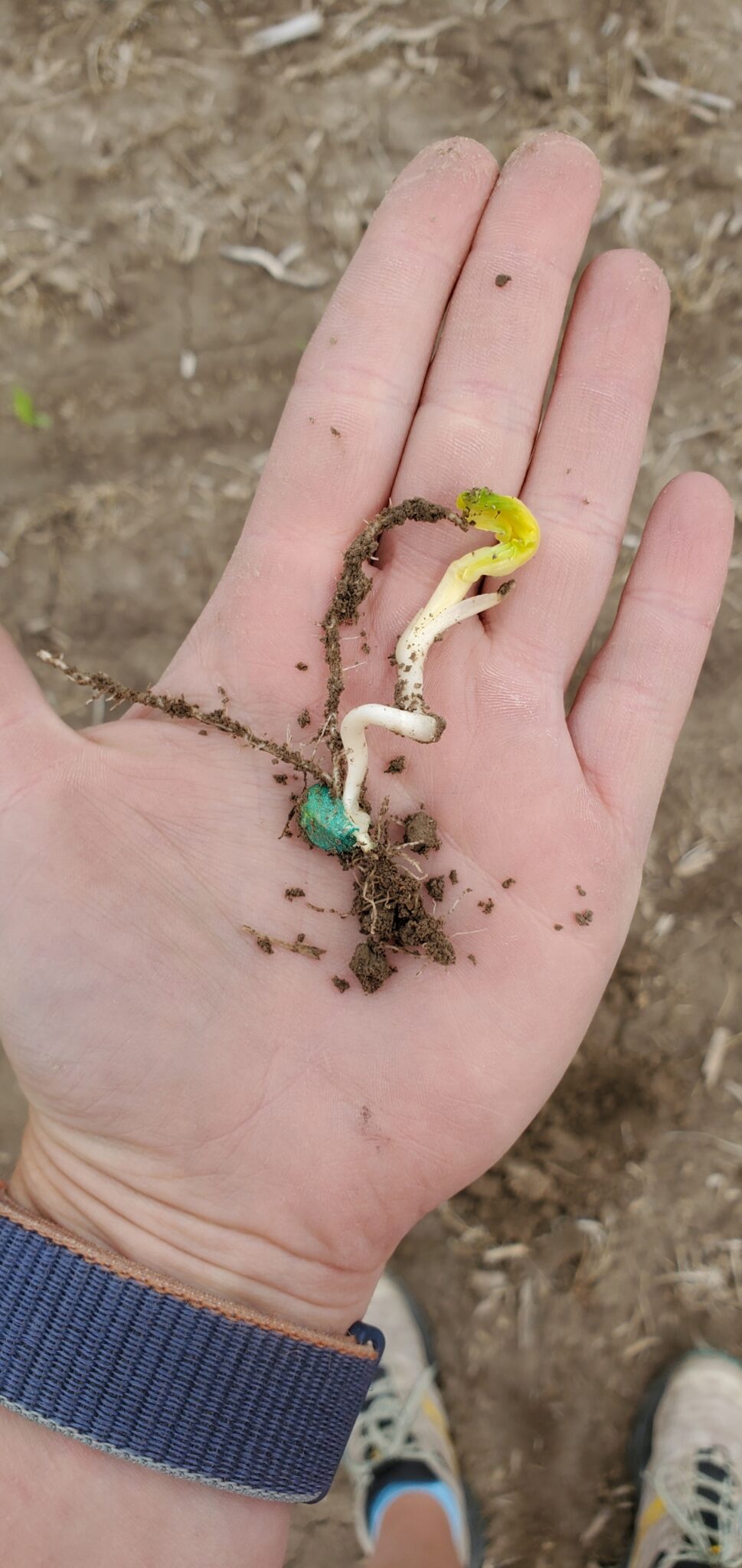As planting season begins and corn plants begins to emerge, a very important step to take each spring is to assess the emergence of the corn plants and take note of any abnormalities, missing plants, or uneven emergence patterns. One symptom that often occurs each year is referred to as a “Corkscrewed” mesocotyl (or the plant tissue that connects the base of the plant to the seed; Pictures 1 and 2). These symptoms are often caused by three main factors: 1) cold injury, 2) soil conditions, and 3) herbicide injury. However, it is important to note that these factors can often be confounded with each other and make it difficult to diagnose the exact cause of the problem.
Soils with cold temperatures and/or wide swings in temperature can cause uneven damage to the outer surface layers of the mesocotyl causing it to form the “corkscrew” shape. When damage is uneven on these outer surface layers, the healthier tissue areas of the mesocotyl continue to elongate, where the damaged surface layers do not, which causes this symptom to occur. Another issue where these symptoms can occur is from poor soil conditions (e.g., surface crusting or compaction). When soil conditions following planting crust over or are very dense (e.g., cloddy) this can cause the young corn seedling to have restricted emergence. In conditions which restrict the corn plant from emerging, the seedling can have bending, twisting, or even leaf out underground, yet not emerge due to these difficult conditions where the seedling cannot “breakthrough” the soil surface. Lastly, herbicide injury can also cause these symptoms. Group 15 herbicides such as acetochlor can impact young seedling development if conditions are cool and poor for rapid emergence and growth, however these symptoms are often less common today due to safeners and current herbicide rates used.
As spring planting begins and corn plants begin to emerge, it is always important to asses plant stand and check for any oddities in plant development, uneven emergence, and/or missing plants. Also, it is important to note that the majority of the problems that are observed are occurring due to symptoms belowground. Therefore, it is always important to have a shovel with you as you begin to assess early-season corn emergence and check the overall health and shape of the seed and root system.
Additional Resources:
Nielsen, R.L., 2022. Emergence Problems in Corn. Corny News Network. Purdue Univ. Ext. https://www.agry.purdue.edu/ext/corn/news/timeless/EmergenceFailure.html
Hartzler, B., and M. Anderson. 2018. May Maize Maladies. Iowa State Univ. Ext. https://crops.extension.iastate.edu/blog/bob-hartzler-meaghan-anderson/may-maize-maladies
Thomison, P. 2017. “Corkscrewed” mesocotyl development causing emergence problems in corn. C.O.R.N. newsletter. Ohio State Univ. Ext. https://agcrops.osu.edu/newsletter/corn-newsletter/2017-13/%E2%80%9Ccorkscrewed%E2%80%9D-mesocotyl-development-causing-emergence-problems

Picture 1. Corn seedling mesocotyl “corkscrewing” symptoms which occurred following late-April planting in West Lafayette, IN 2022.



